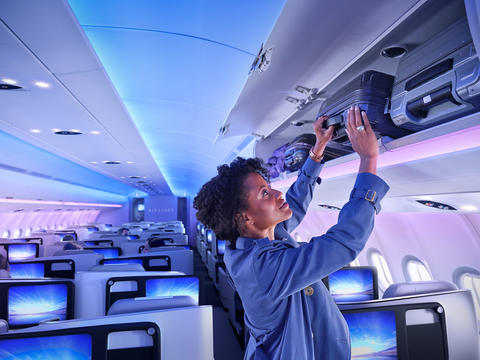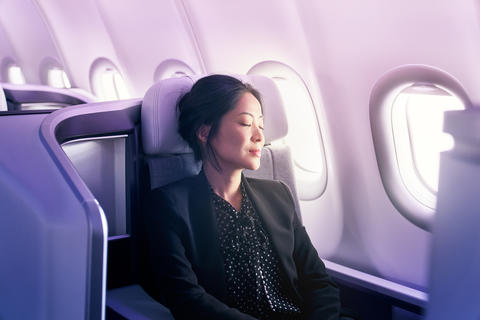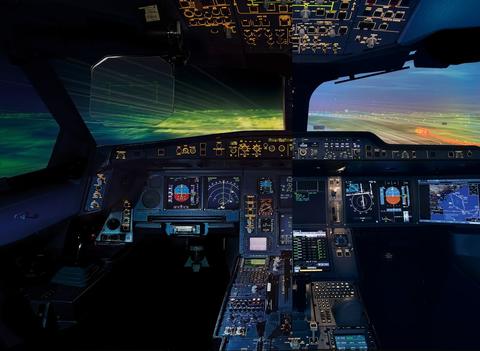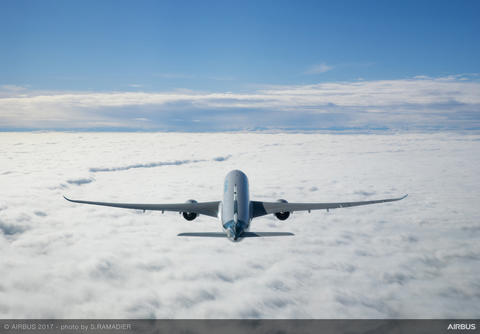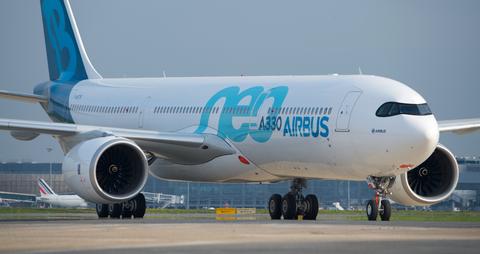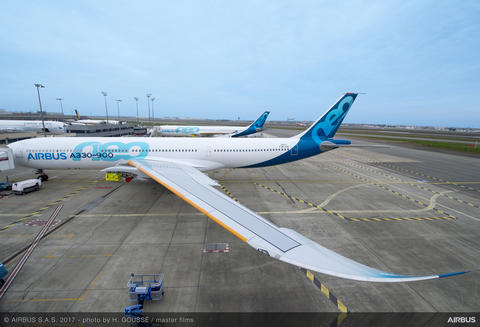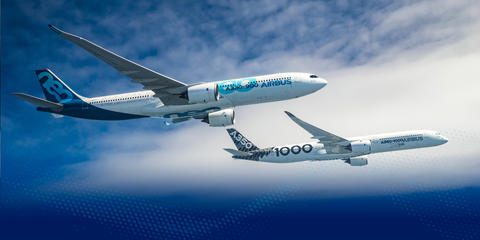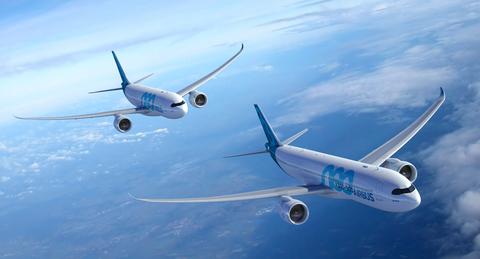For decades Airbus has offered quiet cabins and is accepted as an industry benchmark for cabin comfort which is embedded in the Airspace DNA. Moreover, in today’s competitive environment passenger well-being is one of the main differentiating factors and interior noise is one of the main drivers, so it’s no surprise that the cabins of Airbus’ current widebody airliners – the A350 and A330neo embody these credentials.
So what goes into making a quiet cabin and where have we come from, and why? Sven Petersen, Airbus acoustic expert, explains the overall context: “Airbus Engineering has built on over 40 years of high level competence of source identification and reduction of noise (acoustic design). The global design approach is to create best ambient noise levels in the cabin, combined with minimum noise emitted by intrusive noise sources. Both integrated into the performance-optimized aircraft environment create the highest customer value and passenger well-being.”
Indeed, Airbus’ quiet aircraft interiors are not only a consequence of good solutions from experienced engineers, but it also arises from our decision to integrate acoustic design into the aircraft design process.
Acoustic design – embedded at the outset of product development
“The embodiment of acoustic design in the early design stages minimises integration efforts, while keeping optimum performance – as opposed to a design ‘troubleshooting’ approach of retrospectively adding extra insulation after aircraft design freeze or flight testing – which adds weight,” points out Petersen.
“To this end, Airbus’ acoustic requirements are cascaded to all relevant cabin and system elements early in the aircraft design process. As a consequence of our requirement-based engineering approach, the cabin lining elements, for example, embody our airborne and structure-borne noise requirements fulfilling the overall design intent.”
Overall there are four potential sources of noise which could be heard by passengers. These comprise: ambient noise coming in from outside the aircraft; continuous noise from systems inside the aircraft; intrusive intermittent systems noise events; and noises from hatches and latches etc.
1. Ambient noise from outside the aircraft
The acoustic design to realize a low ambient noise environment is the result of our targeted investment on all aircraft elements which are related to the transfer of noise energy from outside the aircraft to passengers and crew inside the cabin – ie from ‘source’ to ‘receiver’. These could include aerodynamic and external airflow-related noise, such as noise coming from the engine inlet and exhaust, as well as vibrations from the engine which are transmitted through the aircraft’s wing box structure and into the cabin.“Deep investigations have been performed over the Airbus history and a resulting extensive know-how has been achieved in order to understand the excitation mechanisms, structural dynamics, energy transfer and acoustic behaviour of aircraft structure and systems,” says Petersen.
As with the A350, the A330neo benefits over its predecessor (the A330ceo) thanks to the Neo’s new-generation high bypass Trent 7000 engines. Not only is there less exhaust noise (due to the slower bypass air velocity), but the nacelle and inlet’s new “zero-splice” design coupled with noise-absorption surface treatment further reduces both structural, fan and other airflow-related noise, as perceived inside the cabin. In fact, depending on the engine thrust settings and location in the cabin, Airbus’ own measurements taken during production flights indicate that the A330neo’s cabin is several decibels (dBA) quieter than its predecessor, the A330ceo. (The latter already being the ‘quiet cabin’ industry benchmark in the 220-300 seater widebody market.)
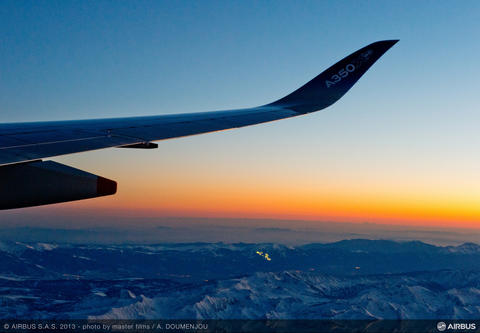
2. Noise from systems inside the aircraft
“Noise emanating from systems inside the cabin can also be targeted / treated so it does not excessively contribute to the overall ambient noise and thus not be noticeable (ie. not locatable and nor disturbing) to passengers,” notes Petersen.
Examples in the A350 include the noise control of the Environmental Control System (ECS) e.g. (AGU, DAGS, Mixing-Unit, Ducting, Air-Outlets etc) is of high importance. In this field, Airbus has gained in the past decades excellence for ‘silent design’.
In particular, Airbus’ choice is to use an air distribution system which results in slower air flows while improving the air distribution compared to other aircraft designs.
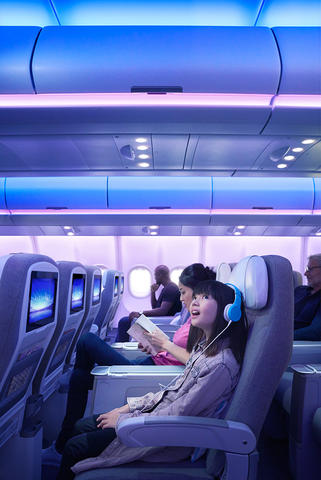
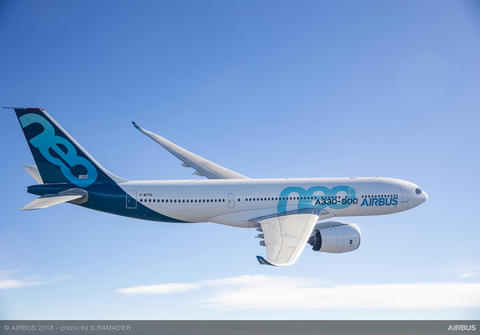
3. Intrusive intermittent systems noise events
A third category of noise is the intrusive (temporary) noise events from systems which would impact the comfort feeling.
“Airbus pays particular attention to the so-called intrusive noise from systems and “operational” noise – this type of noise appears while the aircraft is being operated.
Such noise from systems can include for example the noise of the water/waste system vacuum-based toilet flushing, the noise of galley systems (e.g. ovens, coffee maker) being used, electrical system noise (e.g. transformers) and many others,” he adds.
4. Noises from hatches & latches
Beside the systems, noise can also occur simply by using the aircraft interior – such as from use of hatches, latches, door locks or by trolley handling in the galley. In some cases an audible feedback is required in order to alert the cabin crew that a door is properly locked, for example.
“The art is to identify the driving noise sources and how to treat them, and to what extent. This is not an easy task in a complex supplier environment where Airbus has reached excellence,” notes Petersen.
The good news for passengers flying in both the A330neo and the A350 is that these aircraft have fully integrated Airspace cabins. This means that the new panels, hatches, monuments, doors, galley equipment, etc. have all been designed and operationally tested to minimise potential noise events, as well as to suppress overall resonance and vibration. This is welcomed by passengers and crews, as the result is a quiet cabin during all phases of the journey - from boarding, take-off, cruise, landing, to taxiing back to the destination gate.
For decades Airbus’ widebody airliner families – progressively from the A300, A310, A340, A330ceo, A380, A350, and most recently the A330neo – have all at some point set the industry’s benchmark interior noise for competitors, airlines and passengers. As we have discussed, this did not happen by chance. Rather, Airbus, from the outset of each programme’s development, has proactively applied a global approach to interior noise design and to creating the lowest ambient cabin noise while providing highest customer value and passenger comfort. This has been made possible with key investments on methods and tools and knowledge development, leading to a range of solutions to deal with each noise source in the most effective way.
